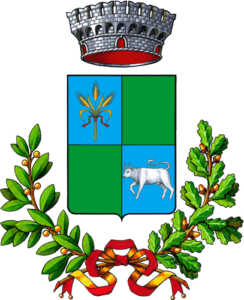
Bonorva
Referred to as ‘donnu Comita de Athen […] in Bonorba’, the condaghe di San Nicola di Trullas is a record that attests to the existence of this centre, which spans an incredibly large region and is rich in pre-Nuragic and Nuragic remnants. It should be mentioned that the San Nicola di Trullas monastery, which is located in Semestene area today, was built by the Athen family.
The Mediaeval Period.
An important event in the village’s history dates back to the beginning of Catalan-Aragonese dominance. It happened in August of 1347 when Guglielmo di Cervellon, the governor-general of the Kingdom of Sardinia, was ambushed by the Dorias, who were monarchy rebels, while leading an army towards Sassari. The violent conflict occurred in the area of S’aidu de Turdu, between the modern-day municipalities of Torralba and Bonorva. As the scholar Virgilio Tetti pointed out, “articulate evidence remains in the human remains that are discovered in large quantities in the ravines of Badde Fustes and Sa Pala ‘e Sa Piedade, but especially in the graves, found near the destroyed church of Santu Bainzu de Medrinu, and in the large mass grave, found by peasants near the destroyed church of San Nicola,” likely containing the remains of the Dorian army’s dead.
Among the families with feudal successions are the Cubello (1410), Alagon (1470), Marongiu (1478), Enriquez (1480), and several other families, the majority of whom are of Catalan or Iberian descent.
Present-day Bonorva
The parish church was dedicated to the Mother of God in 1614 by the monk Diego Passamar, who eventually became bishop of Ampurias. The aforementioned individual was very certainly responsible for the arrival of the Jesuits in Bonorva (1612). The bell tower and church of Saint Anthony were also erected in the 17th century (by Bachisio Mura, 1682), as was the church of San Giovanni, which was repaired and extended, and the previous parish church of Saint Victoria, which eventually became a Jesuit chapel. The Marquis of Villarios was the last feudal ‘lord’.
Revolting towns
The cities of Bonorva, Semestene, and Rebeccu, on the other hand, were among the advocates of the anti-feudal movement, providing unequivocal support to Angioy. Paolo Frassetto, Giovanni Pintus, Antonio Cossu Marras, Giuseppe Calaresu, and Angelo Mamusi Cossu are among the Alternos’ accomplices, the majority of whom were jailed during the years of persecution. Giovanni Pintus Tolu, also known as ‘Topu‘ (the lame man), was hanged in 1787 at the gallows near the ancient Carmine di Sassari, whose head was nailed to the scaffolding, and the Muroni brothers deserve special recognition.
Semestene parish priest Priest Muroni and the Bonorva Angioyans
As the backbone of the Sardinian Revolution’s ruling core, the Muroni brothers from Bonorva played a significant role in that distinct class, which included land owning shepherds, small-town nobility, city bourgeoisie, and clergy. They saw in Angioy the reliable man to whom they could present a variety of interests. Members of a pastoral elite that had succeeded in making a reputation for themselves by funding their kids’ college education, the Muroni brothers knew that feudalism was the sole thing impeding the freeing up of resources in their world. The fact that a large number of Bonorvesi participated in the Sardinian revolutionary upheavals allows us to calculate the exact coagulation capability that these strategic locations within the region may possess. Following the conclusion of the Angioyan dream in 1796, the Viceroy Delegation of Sassari forwarded the findings to the Secretariat of State in Cagliari, where they questioned and put on trial Giovanni Carboni, Antonio and Gavino Cau, Baingio Cossu Gasamo, Antonio Cossu Marra, Antonio Frau, Pietro Manunta, Bachisio Morittu Mura, Bachisio Pintus, Giuseppe Piu Cossu, Salvatore Sanna, Pasquale Santucciu, Battista Giovanni Sassu, Angelo, Antonio, Francesco, Giovanni and Sebastiano Sassu, Francesco Uras and Pasquale Zanzu, as well as the Muroni brothers.
A large number, with theologian Francesco Muroni, parish priest of Semestene, as the spearhead.
After coming under the scrutiny of Della Torre, the archbishop of Sassari, for his overt anti-feudal rhetoric and for Semestene’s role as a mandatory station for Angioyan movement adherents, Muroni adhered to the Alternos until the very end. He learned with bitterness that the Valentinian’s restraint was already having a noticeable impact.
Driven back to Scala di Giocca and compelled to escape, he was committed to liberating Gavino Fadda and other Angioyans imprisoned in the city and hoped for an uprising of the Sassaresi. In order to gather as many people as possible for a new endeavour, he travelled to his Bonorva, which he thought to be a safe haven, on October 7 and 8, 1796, accompanied by several Bonesi.
For an ardent supporter such as himself, losing recognition of his native nation due to its capture by the Prunas was the last straw. Muroni, overcome with sadness and grief, fled into hiding between the Marghine and Montiferru hills. However, he was betrayed by a certain Dore di Sindia, whom he believed to be a friend, and ended up in the hands of the law enforcement.
In chains, he walked through the streets of the city covered with spit and insults. He was taken to the prison of St Leonard and suffered a torturous fate. In response to these defamatory accusations, he wrote, in January 1808, a memorandum sent to the archbishop of Alghero that was addressed to the king and in which, narrating the events in which he was a protagonist, he intended to justify his actions to obtain his freedom.
That year, in fact, despite the general amnesty granted since the arrival of the Savoyards in Cagliari, he was still detained. He died two years later in the convent of St. Peter of Silki in Sassari.
Bibliography
P. ATZORI, Sassari. Il Carmine vecchio. Per un giardino che racconti 4 secoli di storia, Roma 2021, pp. 136-141.
L. BERLINGUER, Alcuni documenti sul moto antifeudale sardo, Cagliari 1962, pp. 31-32.
L. CARTA (a cura di), L’attività degli Stamenti nella «Sarda Rivoluzione» (1793-1799) in Acta Curiarum Regni Sardiniae, vol. 24, Cagliari 2000, pag. 2336.
P. CUCCURU, Francesco Muroni e il problema dell’eversione feudale, in Quaderni della Biblioteca comunale, 1, Sassari 1983, pp. 39-53
A. NASONE, S. A. TEDDE, In sos logos de Angioy. Lungo le strade della Sarda Rivoluzione: testi e documenti, Sassari : EDES, 2021
Credits
A. NASONE, S. A. TEDDE

